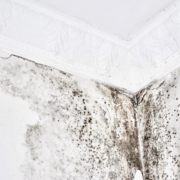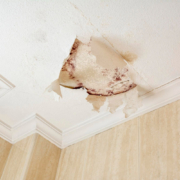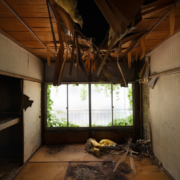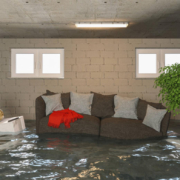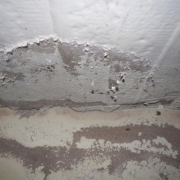At What Humidity Level Does Black Mold Start to Grow?
Introduction
Understanding the relationship between humidity levels and black mold growth is crucial for maintaining a healthy indoor environment. Black mold, known scientifically as Stachybotrys chartarum, thrives in damp conditions and can pose significant health risks. Left unchecked, it can lead to respiratory issues, headaches, and even affect your central nervous system. Property damage is another major concern as black mold can deteriorate walls, ceilings, and other structures.
This article aims to shed light on:
- The connection between high humidity levels and black mold development.
- The specific humidity thresholds at which black mold starts to grow.
- Common sources of excessive moisture in homes.
- Effective strategies for preventing and controlling black mold through humidity management.
By the end of this guide, you’ll have practical insights to protect your home from black mold.
Understanding Black Mold Growth and Its Connection to Humidity
Definition and Characteristics of Black Mold
Black mold, scientifically known as Stachybotrys chartarum, is a type of fungus that thrives in damp, humid environments. It appears as dark green or black patches and often emits a musty odor. Black mold can grow on various surfaces, including drywall, wood, and carpet, posing significant health risks and property damage.
How High Humidity Fosters the Development of Black Mold Spores
High humidity levels provide an ideal environment for black mold spores to develop and proliferate. When indoor moisture levels exceed 55%, black mold spores find it easier to settle and grow. High humidity can result from multiple sources such as poor ventilation, water leaks, or flooding. These conditions accelerate mold growth by ensuring that surfaces remain damp and conducive to spore germination.
The Role of Relative Humidity in Creating Favorable Conditions for Black Mold Growth
Relative humidity (RH) measures the amount of moisture in the air relative to what the air can hold at a given temperature. An RH level above 60% creates favorable conditions for black mold growth. This high moisture content allows mold spores to absorb water from the air and initiate colonization on various surfaces. Monitoring RH is crucial for preventing black mold infestation; using tools like hygrometers helps maintain RH within safe limits—typically between 30% and 50%.
Understanding these aspects highlights the importance of controlling indoor humidity levels to prevent black mold growth.
The Threshold: At What Humidity Level Does Black Mold Start to Become a Problem?
Understanding the threshold at which black mold begins to grow is crucial for maintaining a healthy indoor environment. Black mold growth becomes a significant concern when indoor humidity levels exceed 55% relative humidity (RH). This level of moisture provides an ideal environment for mold spores to thrive and multiply, leading to potential health and property issues.
Ideal Range for Indoor Humidity
To prevent black mold infestation, it’s essential to maintain indoor humidity within an optimal range:
- 30% to 50% RH: This range helps minimize the risk of mold growth while ensuring comfort.
- Above 55% RH: Conditions become favorable for black mold, increasing the likelihood of infestation.
Regular monitoring and maintenance of these humidity levels can significantly reduce the chances of black mold development in your home.
Tools for Monitoring Humidity
Consider using tools like hygrometers or smart home devices that measure and report indoor humidity. These devices can help you keep track of moisture levels in various rooms, allowing for timely interventions if humidity starts creeping towards unsafe levels.
Maintaining proper humidity control is not only about comfort but also a key step in preventing the growth of harmful black mold.
Factors Influencing Indoor Humidity Levels and Mold Growth Potential
Various factors influence indoor humidity levels, directly impacting the potential for black mold growth. One significant factor is the role of HVAC systems in maintaining optimal indoor humidity levels. These systems, when functioning correctly, can moderate humidity by either adding moisture to the air during dry conditions or removing excess moisture during humid conditions. However, malfunctioning or improperly maintained HVAC systems can lead to inconsistent humidity levels, creating an environment conducive to mold growth.
Understanding why different rooms may have varied humidity readings is crucial for effective mold prevention. Several factors contribute to this variation:
- Room Usage: Kitchens and bathrooms typically have higher humidity levels due to activities like cooking and bathing that release moisture into the air.
- Ventilation: Rooms with inadequate ventilation tend to retain more moisture, leading to higher relative humidity.
- Temperature Differences: Cooler rooms, such as basements, often have higher relative humidity because cooler air holds less moisture before reaching saturation.
- Water Sources: Proximity to water sources such as leaking pipes or roofs can elevate a room’s humidity level significantly.
Monitoring and addressing these factors can help maintain balanced indoor humidity levels, reducing the risk of black mold growth.
Common Sources of Excessive Moisture that Contribute to High Humidity in Homes
Household moisture issues often come from several common sources. It’s important to deal with these issues to prevent black mold growth.
Identifying and Addressing Water Leaks to Control Indoor Moisture Levels
Water leaks and pipe leaks are the main causes of high indoor humidity levels. Even small leaks can create damp environments that are perfect for mold growth if not taken care of. Regular inspections and quick repairs are necessary to reduce this risk.
The Devastating Effects of Flood Incidents on Home Humidity Balance
Flood incidents can greatly affect the balance of humidity in a home. Standing water from floods can last for days or even weeks, making it hard for the structure to dry properly. This prolonged exposure to moisture creates an ideal environment for black mold to grow.
Role of Roof Leaks in Water Intrusion and Elevated Humidity Environments
A leaky roof is another major cause of water getting inside a house. When rainwater seeps into the attic and wall spaces through roof leaks, it leads to higher humidity levels indoors. Regular roof maintenance and timely repairs are crucial in stopping these leaks from turning into serious mold issues.
Identifying these sources of excessive moisture and dealing with them quickly is essential in maintaining the right indoor humidity levels.
Detecting Early Signs of Black Mold Growth Through Humidity Clues
Identifying early signs of black mold growth can help you take preventive measures before the problem escalates. Here are some clues to look out for:
- Condensation on windows or walls: This often means that the air has more moisture than it should, creating an ideal environment for mold spores to grow.
- Rusty pipes: Rust forms when moisture consistently interacts with metal surfaces, indicating prolonged exposure to high humidity levels. This not only affects your plumbing but also suggests that conditions are favorable for mold growth.
Other Visual Observations to Watch For
In addition to condensation and rusty pipes, there are other visual signs that may indicate a moisture-prone environment:
- Yellowish stains on walls or ceilings: These could be a result of water damage, which could lead to mold infestation.
- Cracked or peeling paint: This may indicate underlying moisture problems.
- Blocked gutters: If your gutters are clogged, water can seep into the foundation of your home, increasing indoor humidity levels.
- Warped wood, especially in basements or bathrooms: This is a sign of excessive moisture presence.
By being aware of these clues and taking action when necessary, you can effectively manage high humidity levels and reduce the chances of black mold growth in your home.
Health Risks Associated with Exposure to Black Mold in High-Humidity Spaces
- Volatile Organic Compounds (VOCs) and Respiratory Problems
Black mold releases volatile organic compounds (VOCs) as part of its metabolic processes. These compounds can significantly impact indoor air quality, leading to a range of respiratory issues. Individuals exposed to these VOCs may experience:
- Coughing and Wheezing: Persistent exposure to VOCs can irritate the airways, causing chronic coughing and wheezing.
- Asthma Symptoms: For those with pre-existing asthma, mold exposure can exacerbate symptoms, making breathing more difficult.
- Allergic Reactions: People sensitive to allergens might develop symptoms such as sneezing, runny nose, and itchy eyes.
- Impact on the Central Nervous System
Inhalation of black mold spores does not only affect the respiratory system but also extends its harmful effects to the central nervous system. Key symptoms include:
- Headaches: Prolonged exposure to mold spores can result in frequent headaches or migraines.
- Dizziness: Mold-related toxins can cause dizziness or a sense of imbalance.
- Cognitive Effects: Some individuals report difficulty concentrating, memory problems, and general cognitive fatigue after prolonged exposure.
Understanding these health risks underscores the importance of maintaining optimal humidity levels indoors to prevent black mold growth. Proper humidity control measures can mitigate these adverse health impacts effectively.
Effective Strategies for Preventing and Controlling Black Mold Through Humidity Management
Moisture control is essential in preventing black mold growth. Keeping indoor humidity levels between 30% and 60% creates an environment that is less conducive to mold development.
Maintaining Optimal Humidity Levels
- Use Dehumidifiers: These devices help reduce excess moisture in the air, particularly in damp areas like basements.
- Air Conditioners: Running air conditioning units can also lower humidity by cooling the air and removing moisture.
- Ventilation: Ensure proper ventilation in high-moisture areas such as bathrooms and kitchens. Installing exhaust fans can significantly aid in reducing indoor humidity.
Immediate Action: Cleaning and Drying Techniques
- Cleaning Mold-Prone Areas: Regularly clean areas prone to mold with a mixture of water and detergent. Hard surfaces should be scrubbed thoroughly.
- Drying Wet Areas Promptly: Any water-damaged areas must be dried within 24 to 48 hours. Use fans, heaters, or dehumidifiers to speed up the drying process.
- Fixing Damaged Areas: Address any leaks in roofs, pipes, or walls immediately. This prevents water intrusion that can elevate indoor humidity levels and promote mold growth.
Effective moisture control combined with diligent cleaning and timely repairs ensures a healthier living space free from black mold.
Proper Ventilation, Air Circulation, and Their Impact on Indoor Humidity Control
Good ventilation practices are essential for reducing excess moisture and maintaining optimal humidity levels indoors. When air circulates effectively, it prevents dampness from lingering and creating an environment where black mold can thrive. Installing ventilation systems in areas like bathrooms, kitchens, and basements that are prone to high humidity can significantly reduce the risk of mold growth.
Here are two effective tools for managing indoor humidity:
- Air Conditioners: These devices not only cool the air but also remove moisture through condensation. This dual function makes them indispensable in controlling indoor humidity levels.
- Dehumidifiers: These tools are specifically designed to extract water vapor from the air. By placing dehumidifiers in areas with excess moisture, you can maintain a relative humidity level below 55%, which inhibits black mold growth.
By incorporating these strategies into your regular home maintenance routine, you can have better control over indoor humidity and prevent black mold formation.
Conclusion
Maintaining a healthy indoor environment depends on controlling humidity effectively and taking proactive measures to prevent black mold growth. By keeping indoor humidity levels between 30-60%, you can significantly reduce the risk of black mold infestation.
Here are key strategies to implement:
- Regular Monitoring: Use hygrometers to keep track of indoor humidity levels.
- Immediate Repairs: Address water leaks and moisture issues promptly to prevent water intrusion.
- Proper Ventilation: Ensure adequate airflow in all rooms, particularly areas prone to moisture like bathrooms and basements.
- Use of Dehumidifiers and Air Conditioners: These tools help maintain consistent humidity levels, especially during humid seasons.
Implementing these measures will protect your home from the harmful effects of black mold and create a safer, healthier living space.


